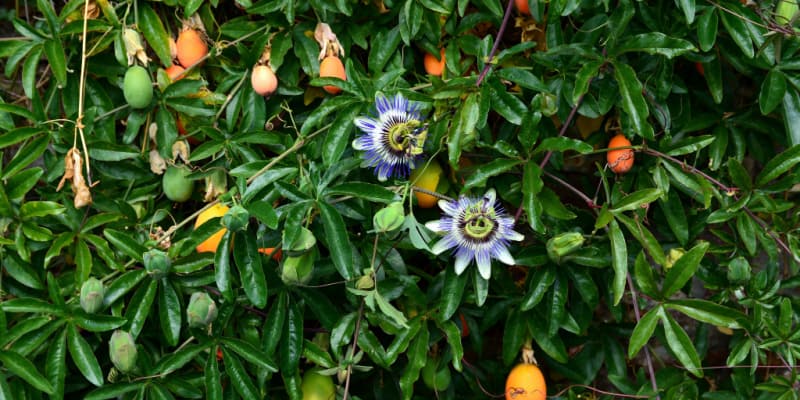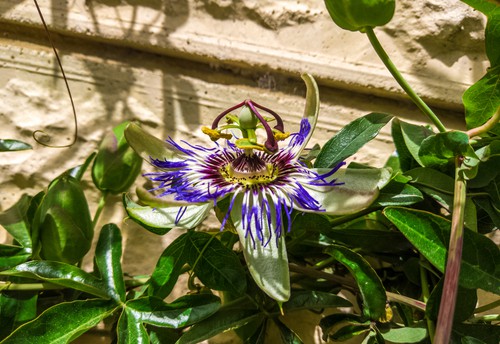
When and how to prune passion flowers
Our site is reader supported, this means we may earn a small commission from Amazon and other affiliates when you buy through links on our site.
Passion flowers are low maintenance when it comes to deadheading and pruning. Just a little attention in spring or after flowering is all that’s needed to prune passion flowers. For most people, just a light pruning after flowering in summer is all that is needed. I like like to lightly prune my passion flowers after flowering to within two shoots of last year’s foliage. You can learn more about this and hard pruning for rejuvinare passion flowers below.
Deadheading passion flowers
While not actually part of pruning, deadheading is a similar task in that it removes unwanted parts of the plant. Deadheading is the removal of dead blooms when they’ve faded away. This both tidies up the look of the plant and stops the plant from wasting energy on those old flowers and going to seed.
However, you don’t need to worry about deadheading your passion flower plant as the old flowers fall off naturally and then form into fruit. Just let them die and drop to the ground in their own good time. If you are growing your passion flowers and want to get the fruit, just let the flowers finish and the fruit form.
Why and when to prune passion flowers
Reasons to prune your passion flower
Passion flowers don’t need much pruning, in fact, they can going on for many years without pruning. Reasons for pruning these plants include keeping them neat if they’ve grown a bit straggly, removing any stems or branches that have died or become diseased, and encouraging more growth. If also worth noting that passion flowers flower on the current year’s growth, so by pruning, you encourage more new foliage the following year, which means more flowers. If you have a very large overgrown passion flower, you can also hard prune them back in spring. However, you probably won’t get any flowers that year, but they do respond well to it.
When to prune
If you notice any diseased branches or leaves, prune those bits off straight away. Be careful to destroy them by burning them and not placing them in your compost heap where the disease can spread.
To keep your plants to a good size or shape, prune them in early spring before the new growth fully develops. Leave the vines untouched over winter, that is, don’t cut them back in the autumn. Then in early spring, cut them back down to just above where the new growth is starting to appear. You may find that the vines have died over winter, so you can see where to cut them back to.
Alternatively, you can cut the vines back after the flowers have all bloomed which is generally what I find myself doing, just to keep the vine neat, but that’s not really necessary.
There’s no need to prune passion flowers aggressively and cut them right back down to the ground unless you want to try and rejuvenate an old plant. A gentle and selective pruning will encourage the plant to expend its energy on new growth.
How to prune passion flowers
The first rule of pruning
The first rule of pruning is to sterilise your pruning shears and other cutting tools. Many diseases and fungi are actually carried from plant to plant on garden tools which many gardeners don’t realise. If your passion flower is healthy, you want to keep it that way; if it’s diseased, you don’t want to distribute the spores around the plant. So wipe down the shears in between each cut as well. Use hydrogen peroxide or rubbing alcohol as the sterilising agent.
Cut the plant
Select the branch you want to prune. From the tip, follow the branch down to just above a new growth of leaves, i usually cut within two shoots of the old growth, so all the tips are new growth from the current year. Cut about 1cm above this point.
For diseased branches, follow the branch down until you reach healthy, green wood. Cut about 2cm into the healthy plant to ensure that you remove all the diseased parts.
Solving problems
You may notice that there’s something wrong with your passion flower while pruning it. Read my guide on Passion flower pests and diseases to find out what the problem is and how to solve it. I also have a longer guide on growing passion flowers here

